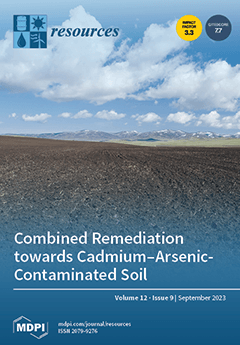The spread of antimicrobial resistance is one of the most serious human and animal health problems of our time. Propolis is a natural substance with antibacterial, antifungal, and antiparasitic activity, the most active components of which are polyphenols and terpenoids. In the present
[...] Read more.
The spread of antimicrobial resistance is one of the most serious human and animal health problems of our time. Propolis is a natural substance with antibacterial, antifungal, and antiparasitic activity, the most active components of which are polyphenols and terpenoids. In the present study, the authors investigated the efficacy of propolis against
Staphylococcus spp.,
Enterococcus spp.,
Escherichia coli and
Salmonella enterica,
Candida albicans fungi, and
Trichomonas gallinae isolated from pigeons. For each pathogen, the minimum inhibitory concentration (MIC) and minimum eradication concentration (MEC) of eight isolates were determined for 96%, 90%, 80%, 70%, and 60% ethanolic extracts of propolis from the region of Észak-Alföld. Propolis was shown to be effective in inhibiting the growth of Gram-positive bacteria,
Candida albicans, and
Trichomonas gallinae strains. Propolis showed a much better efficacy against Gram-positive bacteria (1.56–400 µg/mL) than against Gram-negative bacteria (>13,000 µg/mL). For
Staphylococcus spp., MIC values ranged within 1.56–400 µg/mL and MEC values within 12.5–3260 µg/mL, while for
Enterococcus spp. MIC values ranged within 1.56–400 µg/mL and MEC values within 12.5–800 µg/mL. MIC values > 13,000 µg/mL were found for
Escherichia coli and
Salmonella enterica species. For
Candida albicans, MIC values ranging from 1.56 to 400 µg/mL and MEC values ranging from 3.125 to 800 µg/mL were effective. MEC values between 2.5 and 5 mg/mL were observed for three
Trichomonas gallinae strains. The effectiveness against Gram-positive bacteria has, in some cases, approached that of antibiotics, making propolis a potential alternative in the treatment of wound infections. Its outstanding efficacy against
Trichomonas gallinae holds promise as a potential alternative for treating this widespread infection in pigeons.
Full article





